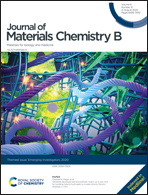Recent progress in dynamic covalent chemistries for liquid crystal elastomers
Abstract
Liquid crystal elastomers (LCEs) have recently shown great potential in the applications of soft robotics, biomedical devices, active morphing structures, self-regulating systems and biomimetic demonstrations. Physical properties of LCEs highly depend on their crosslinking and the alignment of mesogens in the polymer network. Different strategies have been adopted to control and program the alignment of mesogens in LCEs over the recent decades, including stretching a loosely crosslinked LCE during its second-step crosslinking reaction, application of a strong magnetic or electrical field onto an LCE during its crosslinking process, and crosslinking a LCE thin film on the top of a surface with predesigned molecular texture. In the most recent decade, dynamic covalent bonds, which can undergo exchange reactions with or without external stimuli, have been introduced into LCEs to enable facile programing of mesogen orientation in the elastomer. In addition to the programmability, the LCEs with dynamic covalent bonds have also shown great recyclability, self-healing abilities and reprogrammability. In this article, we will review the recent progress in the synthesis, programming and application of LCEs with dynamic covalent bonds. We will also discuss the challenges and research opportunities in the field.

- This article is part of the themed collection: Journal of Materials Chemistry B Emerging Investigators


 Please wait while we load your content...
Please wait while we load your content...